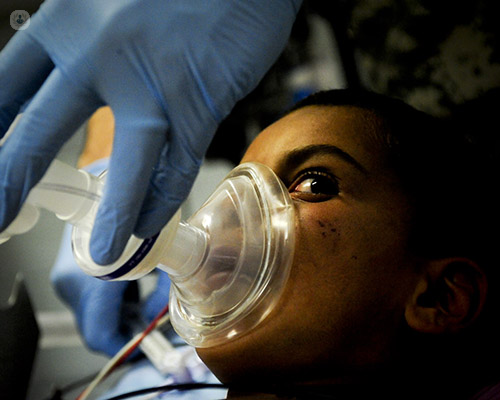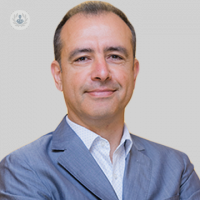Voy a ser operado, ¿anestesia local o general?
Written by:"To be or not to be, that is the question. What is the most worthy action of the soul, to suffer the piercing shots of unjust fortune, or to oppose arms to this torrent of calamities, and to put an end to them with daring resistance? "It is the beginning of the monologue of the third act of Shakespeare's Hamlet Act. It has come to my mind thinking about the surgery and, more specifically, on the anesthesia, which is necessary for the surgery.
When a disease requires surgery the doctor and the patient face a dilemma. Obviously each disease has its nuances and each treatment has its strengths and weaknesses. When choosing, you have to weigh the pros and cons. Each person, doctor and patient, gives a different weight to each of the aspects. One of the first things to decide is whether the intervention should be performed under local, general anesthesia or something in between.
Local Anesthesia vs General Anesthesia
General anesthesia generates much controversy and feelings found in patients. There are patients who fear loss of consciousness, loss of control, who fear never wake up, have anesthetic complications. Other patients fear the pain or face awake some invasive procedure. In maxillofacial surgery the nuances are more subtle: the patient often feels that "they are operating directly to him".

In procedures under local anesthesia the patient at all times feels "that they are operating to him". When operations are performed without general anesthesia in the rest of the body, especially in the extremities, the patient can then be disconnected from the intervention. The human brain, which interprets sensations of sense organs and constructs "reality," immediately records that it does not receive sensory information from anesthetized areas, and very often interprets that the intervened member does not even belong to it. This sensory disconnection greatly facilitates emotional disconnection and makes the surgical experience much less stressful. Even if the patient is seeing the surgical field, he can experience the experience as something disconnected from his body.
In facial surgery, this phenomenon of sensorial and emotional disconnection with local anesthesia is less frequent: the patient "sees" at all times that the surgical activities are directed towards themselves, towards the sensory "control center". The vision, the smell, the taste, the sense of balance, all that keeps remembering the patient's brain that is his own body the object of the surgical intervention. Even proprioception connects the patient with the intervention.
What is proprioception?
Proprioception is the sense that informs the brain of the position and movements of the body itself. When surgery is performed on the face, each small movement of the patient's neck is kept in contact with reality, with the operating room, with the surgical table. When the surgery is inside the oral cavity, the brain continues to register the position of the jaw and the sensation of "reality" is further strengthened.
That is why face surgery in general, and oral cavity surgery in particular, are a common source of anxiety in many patients.
What doctors can do to relieve anxiety caused by anesthesia
- The most obvious response is to use sedation or general anesthesia. Currently, the anesthetic techniques are very safe and provide a surgical experience that for the patient is null, minimal or irrelevant. The use of anesthetic procedures that do not include endotracheal intubation (ie, sedation) should, however, be used with particular care when the surgical field is the back of the oral cavity or pharynx. Thus, a sedation procedure that is not milimetrically controlled by an expert anesthesiologist may carry additional risks if, for example, the patient suffers bleeding from the surgical bed and can not cooperate to allow the surgeon to access comfortably to restrain bleeding. Therefore, it is very important that both the surgeon and the anesthetist have extensive experience and that the center where the intervention takes place has all the guarantees (preferably a hospital, from my point of view). Also for this reason, the use of general anesthesia is often preferable, safer and more comfortable for the patient, which obviously should only be performed in a hospital.
- Surface sedation with oral medication. The use of benzodiazepines and other sedatives may be an excellent option in patients who have anxiety about minor procedures. It is common for our patients to sit in the dental chair several times over several weeks or months. We have verified that the systematic use of this medication in each of the visits is reducing the anticipatory anxiety of the patient, so that finally the patient "learns" that to sit in the dental chair is an experience that does not fit the stress nor the anxiety, and finally it is not necessary to use this medication. On the contrary, patients who say "endure" without sedative medication and require several visits "learn" that sitting in a chair is a stressful experience, and they are getting more nervous with less and less invasive procedures.
- Auditory and visual disconnection. The use of headphones with music or relaxing sounds at the patient's choice is an excellent option as long as the cables or the headphones themselves do not obstruct the intervention. The small wireless headsets that are now so fashionable are, at least for this, a very appropriate solution (if the patient does not lose them on the way to the consultation, of course). Asking the patient to keep his eyes closed is a simple way to help the sensory disconnection. There are patients who, in principle, prefer to keep their eyes open, to be alert ... "just in case". If we favor a trusting environment, they can close their eyes and improve their surgical experience. However, closing the eyes with gauze or bandages is more claustrophobic and should be avoided, except if the motive is to protect one's eyes during the procedure.
- Somatosensory disconnection. Is the most difficult. It involves reducing the movements of the patient to a minimum, so as to reduce the sensory inputs that inform the brain of the position of the parts of the body. We have all experienced, in the silence of the night, in bed, that after a time of immobility it is difficult to know the position of the limbs, and it is the fact of moving legs and arms that reconnects us with our body. If we plan the surgery so that the patient moves as little as possible the neck and the jaw (with mouthpieces that maintain the mandibular position and without unnecessary turns of the head), to some degree the patient reduces the consciousness of his own head. This may seem minor, but is backed by nearly 20 years of research on brain processing of information about one's own body.
Finally, the decision of the type of anesthesia in "minor" procedures can be shared with the patient, accompanied by the necessary information. If the patient feels that he has some control over that decision, the anxiety that the surgery can also reduce. Because well-managed information and the doctor's hand that the patient can trust, always has a great value: it can become knowledge.


